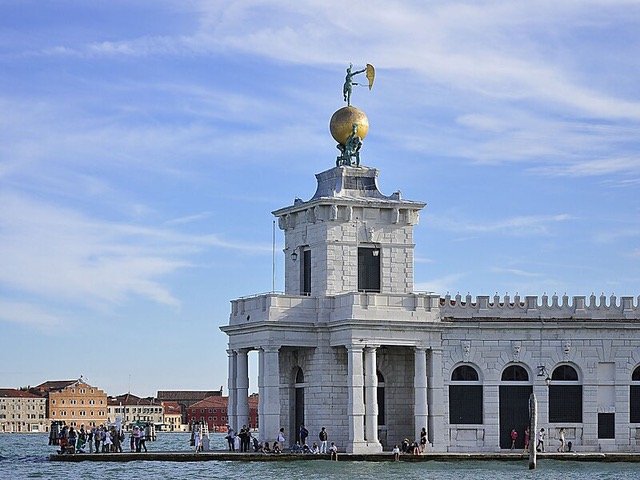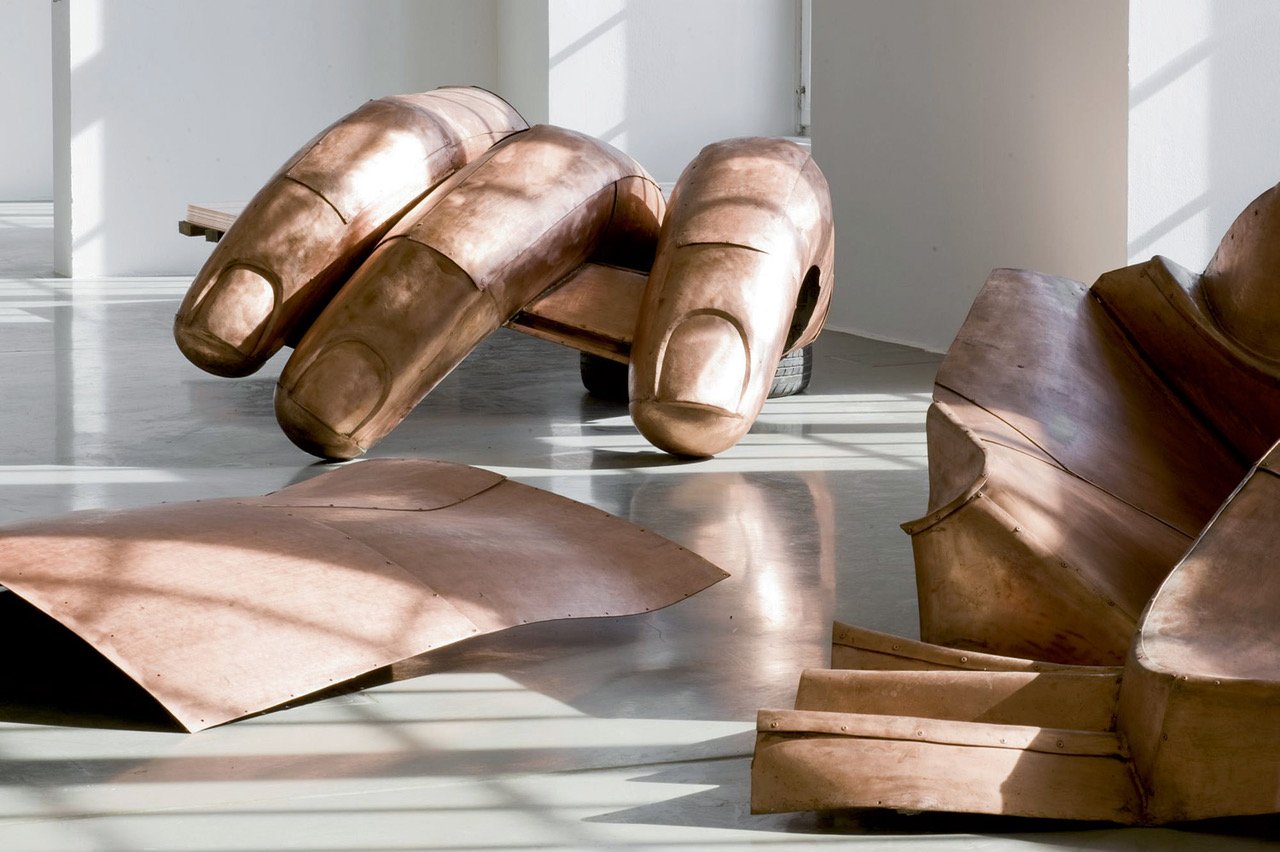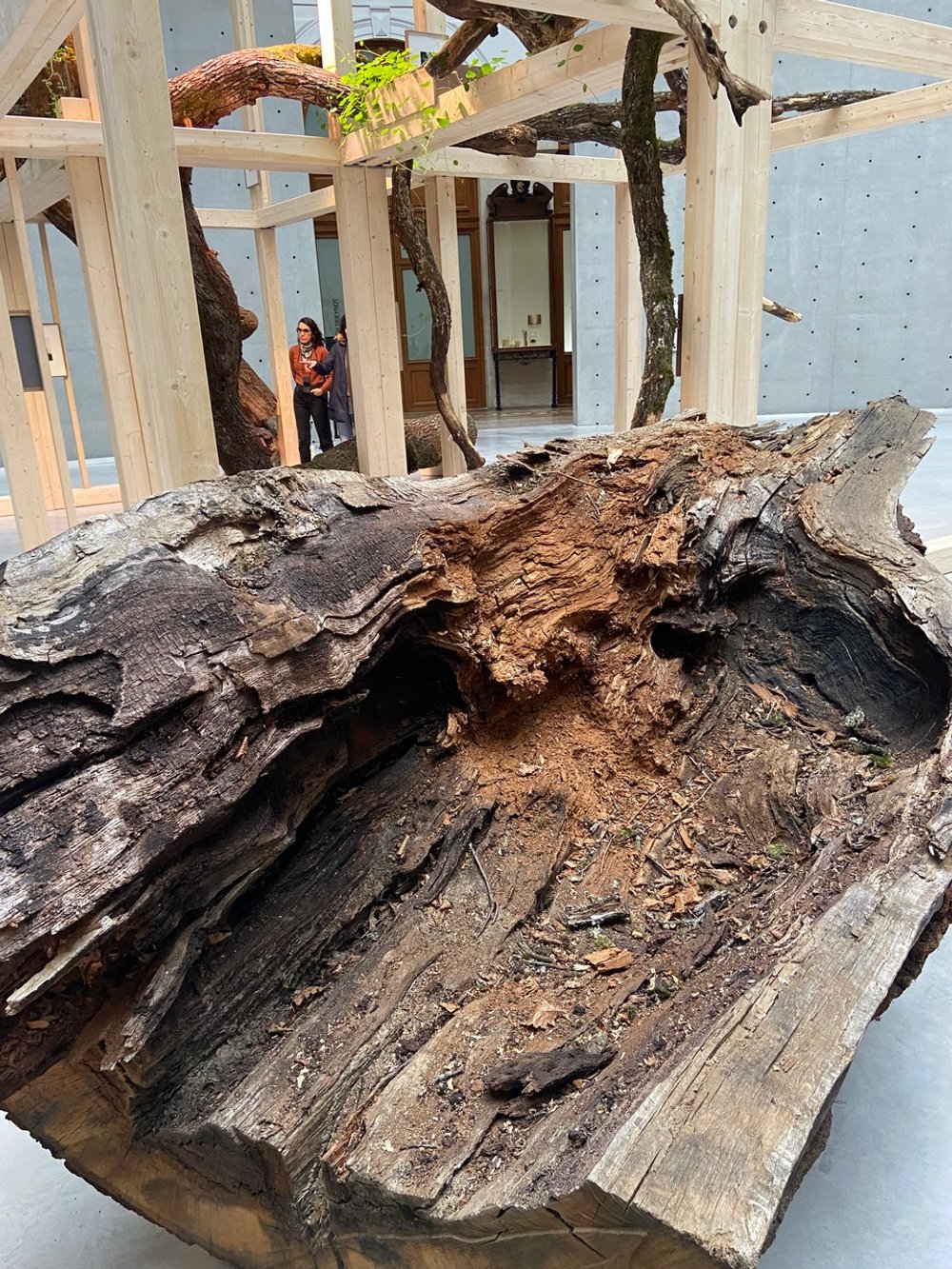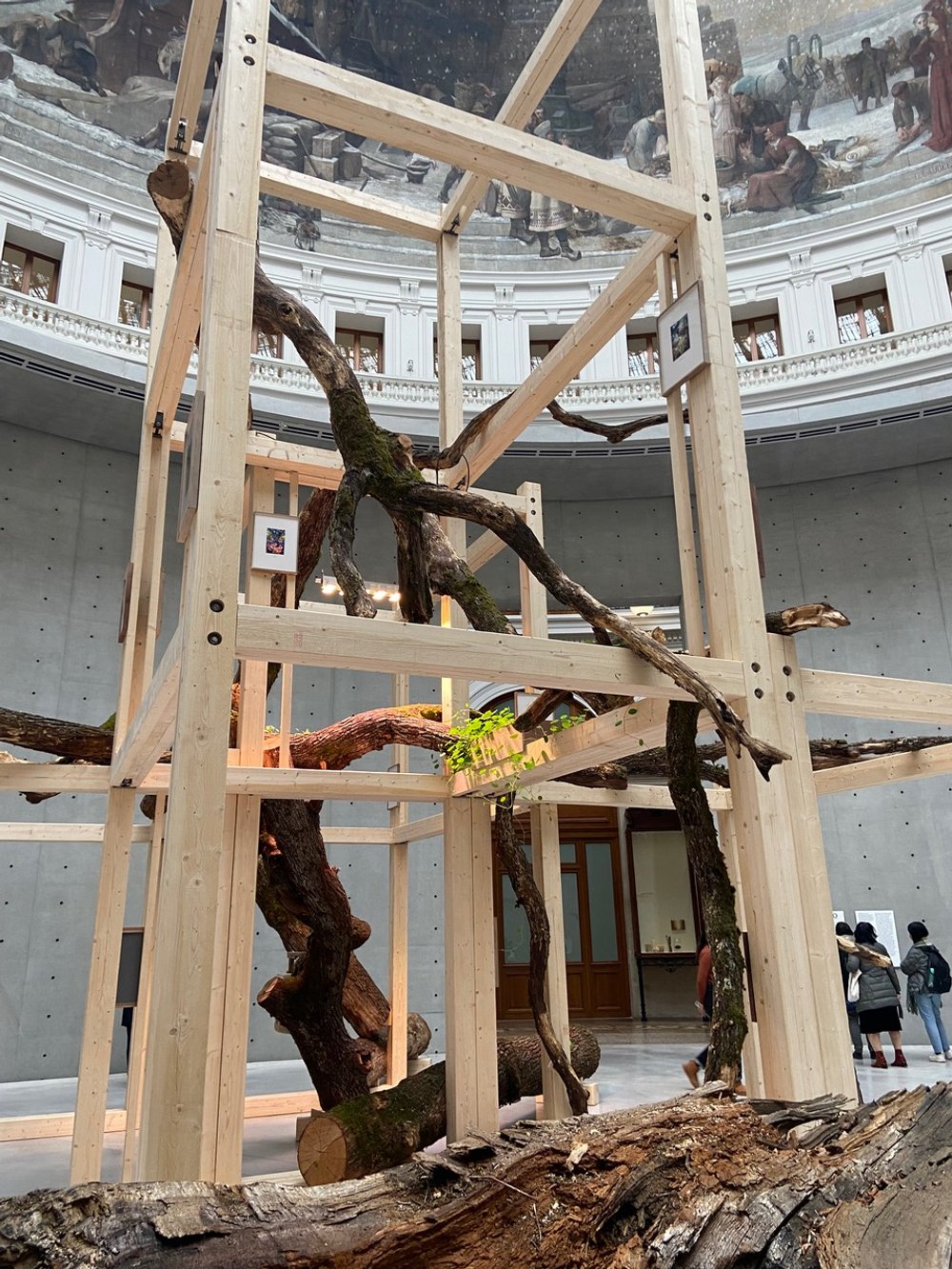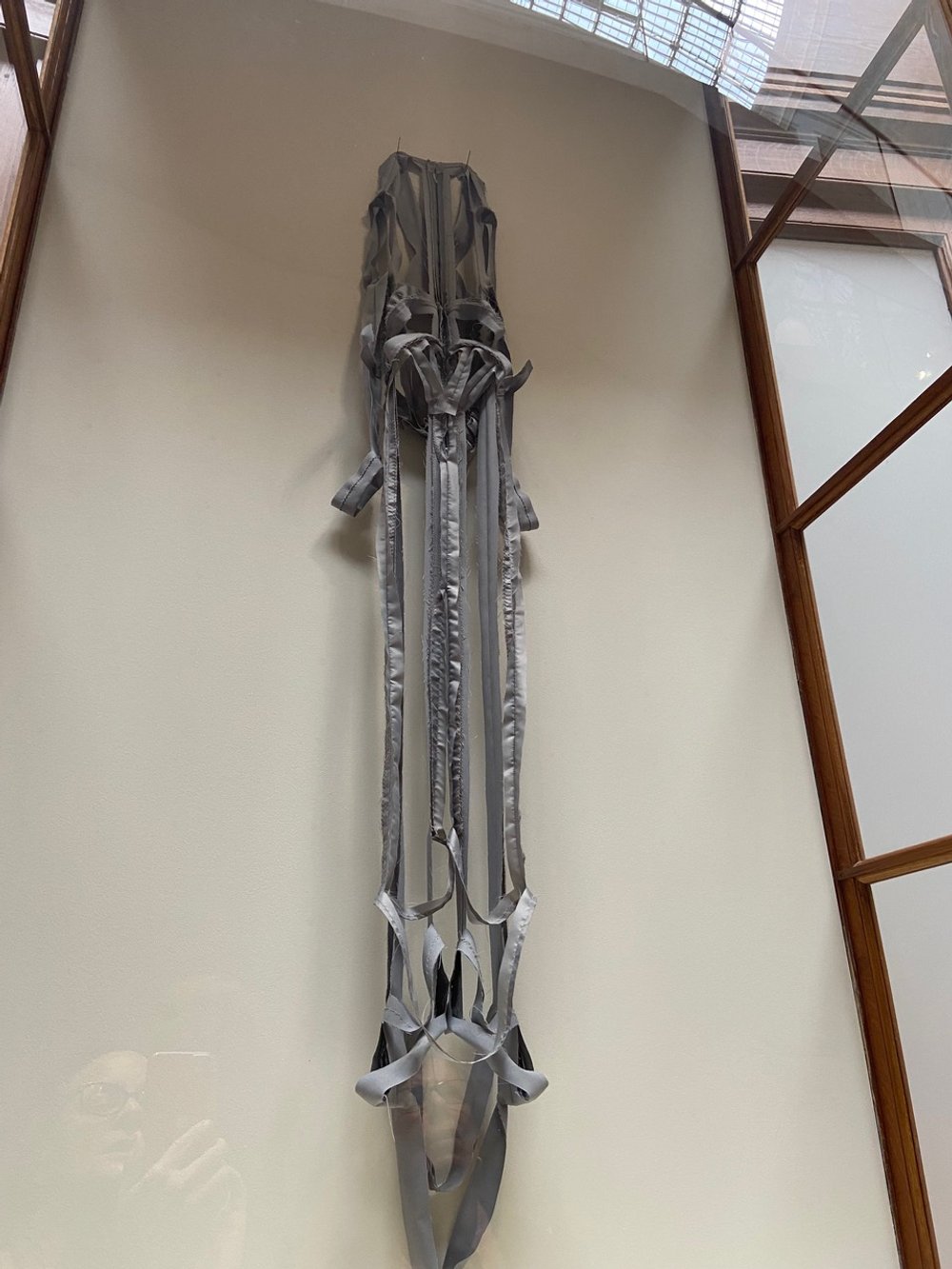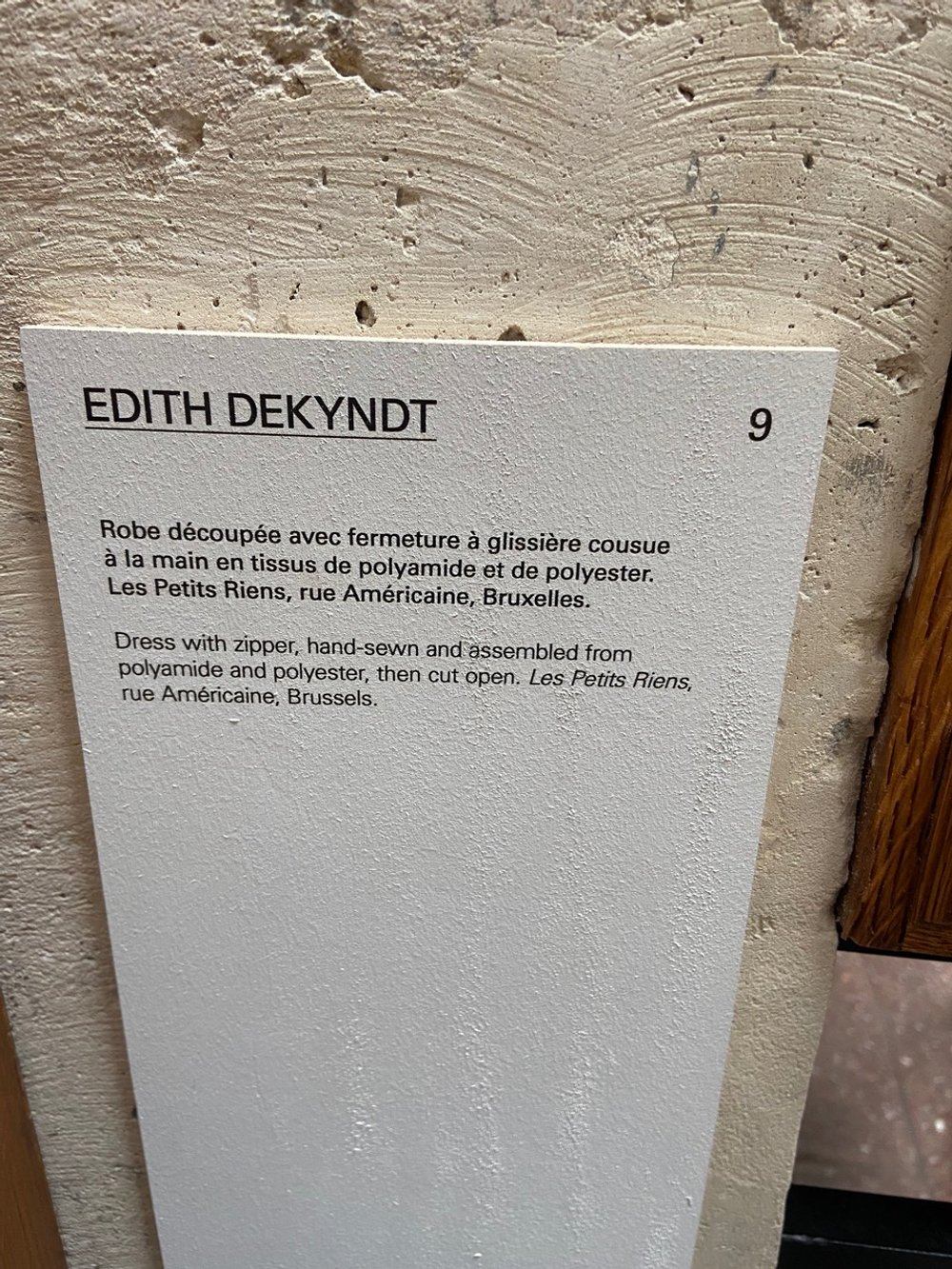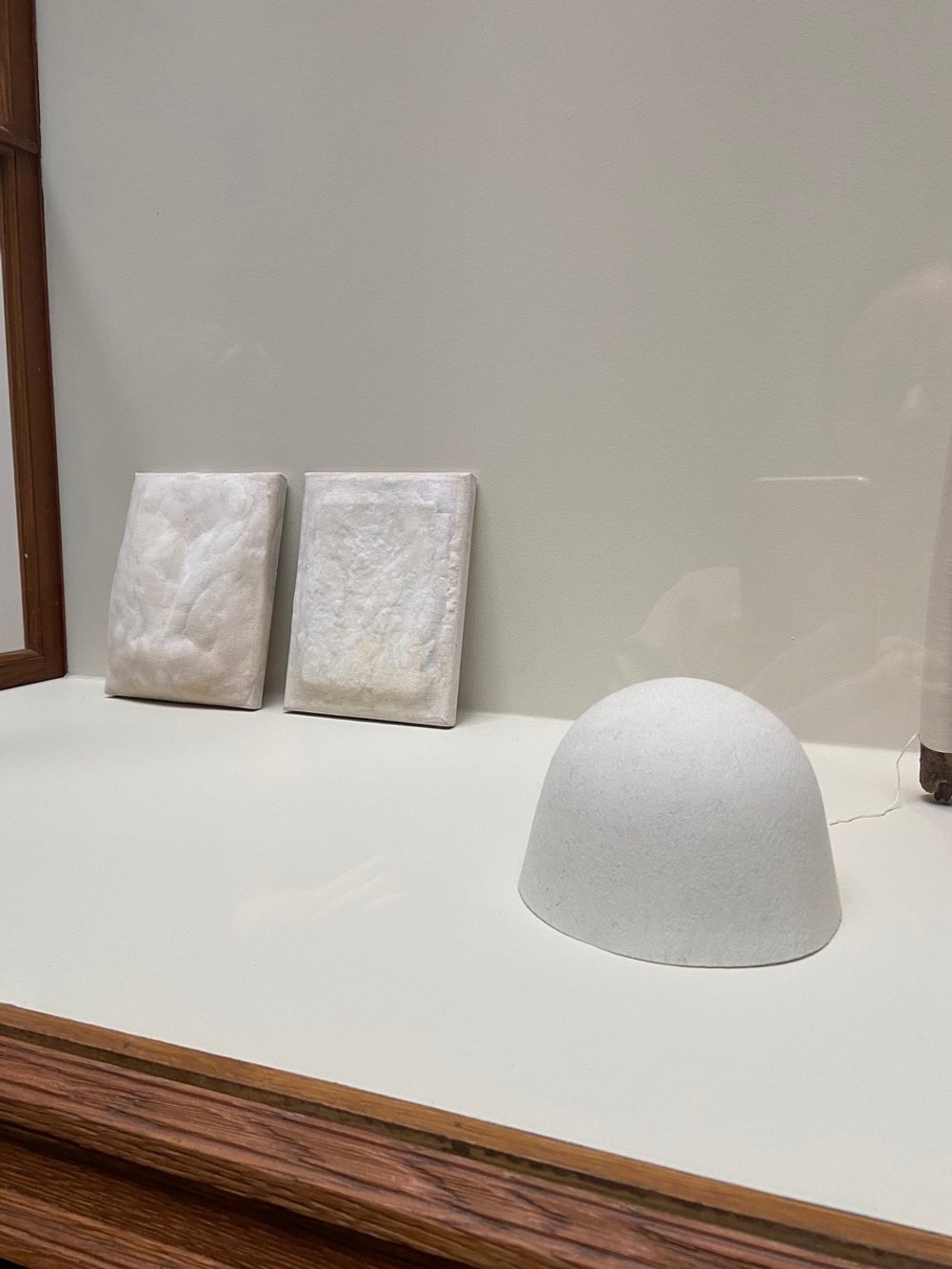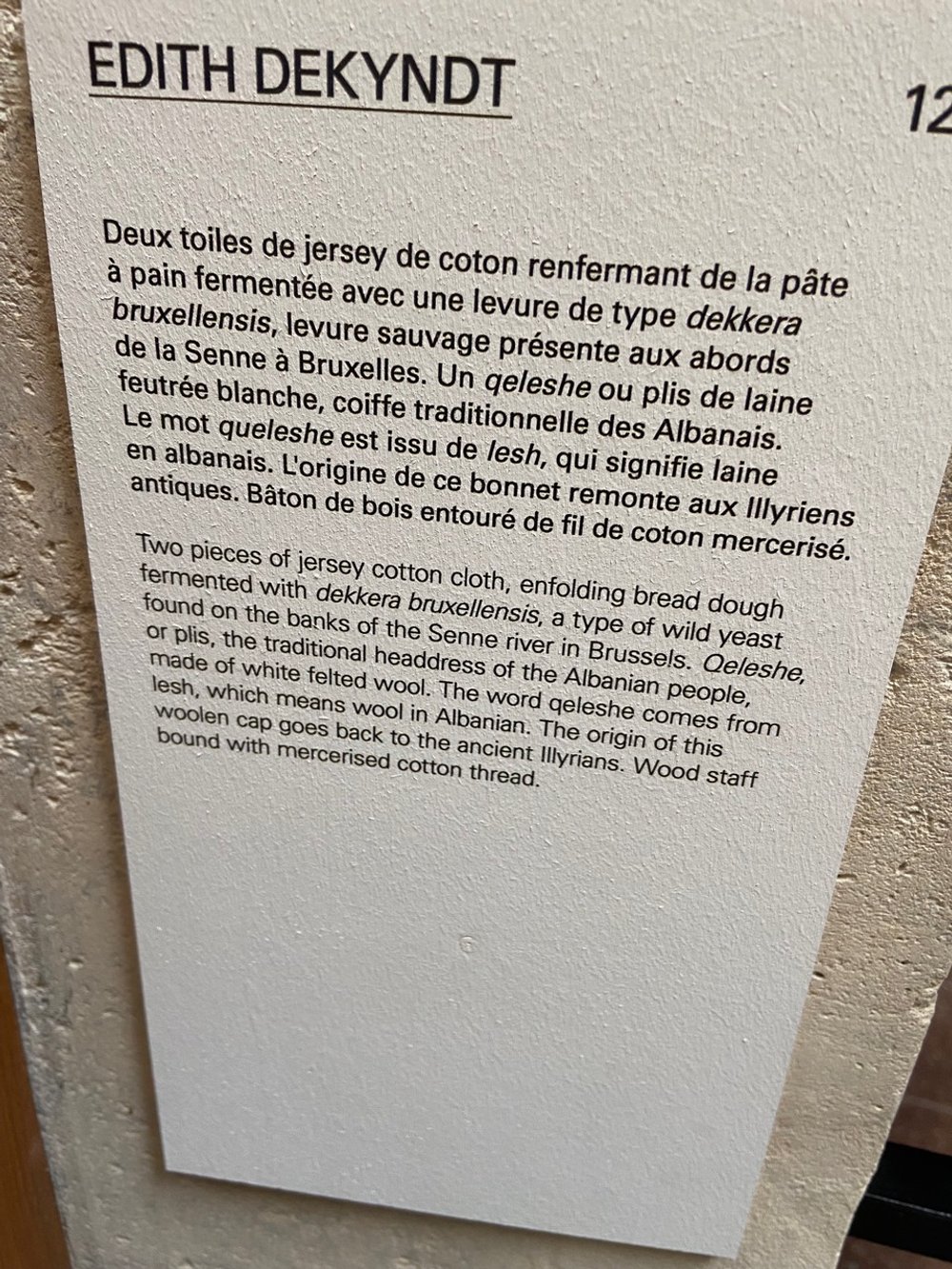It’s Getting Hot in Here
Avant l’orage, Bourse de Commerce
When my friend Sharon suggested that we go to the Bourse de Commerce to see the exhibition Avant l’Orage,’ (Before the Storm). I hesitated. I had just seen and reviewed the exhibition ‘Super Terram,' which was mostly about the fragile condition of our planet. And I had done something I never do, I wandered through rather than paid attention to another exhibition, at Lafayette Anticipations, also about the planet. I wasn’t sure I was ready to see another exhibition focused on the mess we are in and the mess we are leaving for future generations. But I hadn’t seen Sharon since my return from San Francisco - where I had experienced enough atmospheric rivers to last a lifetime although more followed my departure - so I agreed.
Figure 1. Bourse de Commerce, Paris, from rear showing rotunda dome
The Bourse (Figure 1) is that exquisitely remodeled building near Les Halles where François Pinault presents his own collection of very contemporary art and where he welcomes temporary exhibitions of equally contemporary art. The Bourse opened nearly two years ago, delayed initially by French bureaucracy and then by the pandemic. Their goal is to hold 10 exhibitions annually – "from displays highlighting certain artists or themes held within the permanent collection, to solo shows from commissioned contemporary artists.” I don’t know if they are meeting that goal, but I do know that there’s always a lot to see and much to think about here.
Last summer, when Ginevra and I were in Venice, we visited Pinault’s other museum, the Punta della Dogana, (Figure 2) a former Customs Building which the gifted architect, Tadao Ando who renovated/restored the Bourse in Paris, transformed into a museum. Like the Paris building, the Venetian one had been mostly vacant in the years before Pinault came forward, like a knight in shining armor - with a big dose of good taste and an equally big dose of hard cash. He doesn’t own either building. He has a 33 year lease on the Customs Building in Venice and a 50 year lease on the Bourse in Paris. For an 86 year old man, I guess that’s long enough. He paid for the renovations and at least in Paris, he also pays for the maintenance.
Figure 2. Punta della Dogana, Venice, where Grand Canal meets the Giudecca Canal
Both buildings are huge and both had to be transformed into museums without disturbing their skeletons. In Paris, Tadao Andō designed a 30-foot-high concrete cylinder that sits inside the Bourse’s main exhibition gallery. The price of that was $170 million. The grand central dome and the mural which decorates it were classified as historic monuments in 1986. (Figure 3) So neither could be touched but it’s touching to see how artists have worked with and around that mural.
Figure 3. Bourse de Commerce, Paris rotunda interior
It is for this enormous central space that the Vietnamese born Danish artist, Danh Vō (Figure 4) created a site-specific piece. As soon as I walked in, I knew that I had seen his work before. And I knew where. Venice, last year, at the Fondation Querini Stampalia. Ginevra and I were there because of Monty Don’s series on Italian Gardens. And because Carlo Scarpa, the architect who was entrusted with renovating this 16th century palazzo and creating the garden in 1949, is one of our favorites. Scarpa made the ground floor into an exhibition space and he brought a long derelict garden to life.
Figure 4. Danh Vō photo
The exhibition at the Querini Stampalia was co-curated by Danh Vō. It’s mostly in the ground floor exhibition space but it also weaves through the other 2 floors and around the books and objects and furniture collected over the centuries by the palazzo’s previous owners. It’s a dialogue between his work, delicate scaffolding on which are mounted picture frames with photos of plants from his own garden, (Figure 5) the work of the Korean artist Park Seo-Bo and the Japanese-American artist, Isamu Noguchi (1904–1988), whose delicate and fragile paper and bamboo lamps (Figure 6) once filled my house and now are mostly folded up and tucked away in their beautiful packaging.
Figure 5. Danh Vō at Fondation Querini Stampalia, Venice 2022
Figure 6. Isamu Noguchi lamps Fondation Querini Stampalia, Venice 2022
Vō’s work in Venice and then in Paris at the Bourse, intrigued me, I wanted to know more about him. Once you learn his story, you understand why autobiography plays such a key role in his art. Vō was born in 1975, as the Vietnam War ended. It wasn’t peace that came next for Vō and his family but the Cambodian conflict that sent them and so many others out to sea in makeshift boats, bound for America. But the vessel that rescued the people in that boat was a Danish freighter. And just like that, everything changed. No longer flirting with death, no longer bound for America, Vō and his family and all the other ‘boat people’ on that boat, became Danish.
The ramifications of that chance encounter and the role that chance and coincidence play in Vō’s life, in all of our lives, are never far from Vō’s mind, never absent from his work. He frequently incorporates documents, photographs and found objects as he plays with identity - the ones imposed upon him, the ones he creates for himself.
Before I describe Vo’s piece at the Bourse, I want to quickly mention three other projects. The first because, as the granddaughter of immigrants, it’s a familiar story. The second because of how he plays with an American icon. The third because it somehow shows how everything comes full circle.
Here’s the first, called Vo Rosasco Rasmussen. (Figure 7) When Vo got to Denmark’s equivalent of Ellis Island, he was asked his name. Which the authorities didn’t mangle so much as invert. Instead of Vo Trung Ky Danh, he became Danh Vo. In 2003, he decided to play with his name and began getting married to friends, whom he quickly divorced but whose names he kept and added to his own. Which is why the project is called Vo Rosasco Rasmussen. The documents of these unions from marriage licenses and credit cards to passports and finally divorce certificates, chart, as one critic puts it, “the transformation of his name as an evolving souvenir of his sense of self.”
Figure 7. Danh Vō, Vō Rosasco Rasmussen exhibition playing with names given and chosen
Here’s the second, We the People, the title of course is the first three words of the American Constitution. It’s about the importance of America in his life and in the world. In 2010, he commissioned a full scale copper replica of the Statue of Liberty. Not a single intact statue, but 250 fragments. The statue’s ear and links from the chain at the statue’s feet were exhibited at City Hall in New York. (Figures 8, 9) In the garden, Vo planted flowers that 19th century French missionaries catalogued in Southern Asia that were subsequently imported to Europe and North America. The (broken) promise of democracy, the stain of colonialism. At Brooklyn Bridge Park, 13 pieces of the statue, including large sections of the draped sleeve of the Statue of Liberty’s raised right arm, were assembled into three colossal sculptures. As one critic writes, Vo’s “Statue of Liberty is a …monumentally-scaled puzzle that asks us to to think about liberty as it exists globally and locally.” (Figures 10, 11)
Figure 8. Danh Vō, Chains from Statue of Liberty, ‘We the People,’ exhibition
Figure 9. Danh Vō, Fingers from Statue of Liberty, ‘We the People,’ exhibition
Figure 10. Danh Vō, Sleeve from Statue of Liberty, ‘We the People,’ exhibition
Figure 11. Danh Vō, Sleeve from Statue of Liberty, ‘We the People,’ exhibition
And this, for an exhibition in 2013, called Mother Tongue Vo used the personal effects of Robert McNamara, the American Secretary of Defense during the Vietnam War, which he acquired at auction. (Figure 12) What he created is beautiful and disconcerting.
Figure 12. Danh Vō, Mother Tongue exhibition of Robert McNamara’s effects bought at auction
At the Bourse, it’s McNamara's son, Craig, (Figure 13) who makes an appearance. That is, wood from Craig McNamara’s orchard in California. Craig, who was born in 1950, seems to have been every bit as vocal in his opposition to the Vietnam War as Jane Fonda. After the deforestation caused by Agent Orange in Vietnam, Robert McNamara’s son has spent a lifetime trying to atone for the sins of his father. His Sierra Orchards is recognized for its sustainable practices. Craig McNamara is recognized for his commitment to finding a sustainable food system for California and the country. In 1992, McNamara explained that his mission was "...to inspire and motivate people of all ages, especially youth, to promote a healthy interplay between agriculture, nature and society through their own actions and leaders in their communities.”
Figure 13. Photo of Craig McNamara and his book, Because Our Fathers Lied, published 2022
Vo has filled the Bourse rotunda with trunks of decayed oak trees, victims of time and storms, (Figure 14) which he selected with the French National Forest Department. McNamara’s clean, new wood forms the scaffolding that holds the blasted tree trunks up. Hanging on the new wood framework are framed photos of flowers that Vo grows in his garden in Germany. (Figure 15) Interspersed too, are sculptures, mostly wooden religious ones, (Figure 16) that Vo has accumulated. This is an environment, a landscape, which Vō has created for us to move through, to explore, to experience. (Figure 17)
Figure 14. Danh Vo, decayed oak trees, Bourse de Commerce, Paris
Figure 16. Dahn Vo, Wooden statue of Mother and Child, Vo’s personal collection, Bourse de Commerce
Figure 15. Dahn Vo, new wood scaffolding from Craig McNamara’s orchard, & photos of flowers from Vo’s garden, Bourse de Commerce
Figure 17. Danh Vo, Bourse de Commerce
That’s the central rotunda. In the corridor that surrounds the rotunda are works by the Belgian artist, Edith Dekyndt called The Origin of Things. Dekyndt’s mission was to find a coherent theme for the 24 display cases mounted at regular intervals along the corridor.They, like the mural in the rotunda, are permanent fixtures in the space. In each case, there is stuff, none of which would normally be called ‘art.’ Here is how one critic has described them, “loose arrangements of domestic objects, broken, fallen, collected, recovered, posed, covered, repaired, immersed, hung, suspended, floating, or otherwise” (Figures 18 & 18a, 19 & 19a, 20 & 20a ).
Figure 18. Edith Dekyndt, Zipper, one of 24 vitrines, Bourse de Commerce
Figure 18a. Edith DekyndtDescription of Figure 18 above, Vitrine 9, Bourse de Commerce
Figure 19. Edith Dekyndt, one of 24 vitrines, Bourse de Commerce
Figure 19a. Edith Dekyndt, Description of Figure 19 above, one of 24 vitrines, Bourse de Commerce
Figure 20. Edith Dekyndt, one of 24 vitrines, Bourse de Commerce
Figure 20a. Edith Dekyndt, Description of Figure 20 above, one of 24 vitrines, Bourse de Commerce
To learn more about the vitrines, I needed to know more about this artist’s inspiration and intentions. Dekyndt studied visual communications in Belgium and the work of Piero della Francesca in Italy. She’s also a fan of Vermeer. Her art focuses on the transformation of everyday objects, which she records with photographs, installations and videos. How these objects are transformed is a function both of the materials of which they are made and whether they are submerged in water, buried under ground, or exposed to the air. She is like a (mad?) scientist, concocting potions and brews and then subjecting various materials to them. The products of these processes are her art. Dekyndt defines her compositions and her objects as “patient”. One could say that they are her ‘patients’, too, because “all these objects that she activates are waiting to be found, repaired, and transformed by chemical, physical, meteorological, and atmospheric factors.”
For an exhibition in Brussels, in 2016, for example, in what had been a brewery, she let the space’s former function dictate her process and product. The art works she created were based on the interaction between copper, yeast, earth and water from the local river, with bacteria used to brew the beer. She linked the "specificity of the site with the … natural elements, and forged connections between the particular and the universal, the concrete and the abstract.”
So, that’s where she’s coming from and knowing that helps to make sense of what she has created for the 24 vitrines at the Bourse. Vitrines are the French word for the windows that became the hallmark of consumer society in the 19th century. Huge windows in which merchants displayed their wares (Figure 21). The vitrines are linked to industrialization and commercialization, which were celebrated in the world fairs of the late 19th and early 20th centuries. The vitrines remained an essential aspect of commerce all during the ‘brick and mortar’ age that preceded our current online shopping rage. So, the decay and disintegration of the materials in the vitrines on display at the Bourse recall the vitrines’ former function and their diminished role today.
Figure 21. Louis Vuitton Window Display
The most prominent piece in her installation at the Bourse is from 2014. It is a video of a flag made of human hair waving in the breeze on top of Diamond Rock, in Martinique. Called Ombre indigène, (Figure 22) it marks the burial place of writer and theorist Edouard Glissant, who first discussed the terms creolization and métissage. Creolization, according to the Cambridge Dictionary, refers to mixtures of local languages with European or other languages. Métissage refers to the children of a mixed union. It was also here, on this spot, in 1830, that a merchant ship smuggling one hundred African captives ran aground and was destroyed.
Figure 22. Edith Dekyndt, Ombre Indigène, 2014, video
This is just a taste of what is in store for you at this fascinating exhibition that unfolds over three levels at the Bourse de Commerce. (Figures 23, 24, 25) Leave your comfort zone behind. Wander around, stop at what strikes your fancy, force yourself from time to time to learn more about paintings or sculptures or videos that puzzle you. There are young people all around wearing identifying tee shirts who are happy to answer your questions or just talk about art with you. They are all knowledgable and enthusiastic.
Figure 23. Anika Yi, Solar Loci. 2023
Figure 24. Robert Gober, Waterfall, 2015-16
Figure 25. Hicham Berrada, Présage, 2018, Bourse de Commerce
Copyright © 2023 Beverly Held, Ph.D. All rights reserved
Dear Reader, I hope you enjoyed reading this article. Please sign up below to receive more articles plus other original content from me, Dr. B. Merci!
And, if you enjoyed reading this review, please consider writing a comment. Thank you.


